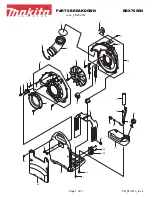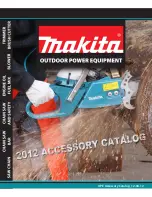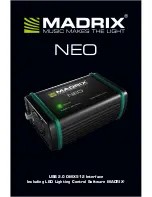
RP0193-2001
NACE International
7
contacting the electrolyte.
The formation or
decay of polarization may be measured to satisfy
this criterion.
4.4 Reference Electrodes
4.4.1 Other standard reference electrodes may be
substituted for the CSE.
Two commonly used
reference electrodes are listed below.
The voltages
given are equivalent (at 25°C [77°F]) to a negative 850
mV potential referred to a CSE:
(a) Saturated
silver/silver
chloride
reference
electrode: a negative 780 mV potential
(b) High-purity zinc (99.99%): a positive 250-mV
potential (see Paragraph 7.3.4)
4.4.2 Stationary
(permanently
installed)
reference
electrodes may assist in measuring potentials under
the tank. Stationary electrodes may be encapsulated
in an appropriate backfill material.
4.5 Special Considerations
4.5.1 Special cases, such as stray currents and stray
electrical gradients, that require the use of criteria
different from those listed above may exist.
4.5.2 Coupons and electrical resistance probes may
be useful in evaluating the effectiveness of the cathodic
protection system.
4.5.3 Conditions
in which cathodic
protection is
ineffective or only partially effective sometimes exist.
Such conditions may include the following:
(a) Elevated temperatures
(b) Disbonded coatings
(c) Shielding
(d) Bacterial attack
(e) Unusual contaminants in the electrolyte
(f)
Areas of the tank bottom that do not come into
contact with the electrolyte
(g) Dry tank cushion
4.5.4 Rocks, clay deposits, or clumps under tank
bottom plates can promote the formation of localized
corrosion activity, which is difficult to monitor or
evaluate.
________________________________________________________________________
Section 5: General Considerations for Cathodic Protection Design
5.1 This
section
recommends
procedures
and
considerations that apply to the design of cathodic
protection systems for on-grade, single- and double-bottom
carbon steel storage tanks.
5.2 Cathodic
Protection
Objectives
and
System
Characteristics
5.2.1 The major objectives for the design of a cathodic
protection system are:
(a) To
protect
the
tank
bottom
from
soil-side
corrosion
(b) To provide sufficient and uniformly distributed
current
(c) To provide a design life commensurate with the
design life of the tank bottom or to provide for
periodic anode replacement
(d) To minimize interference currents
(e) To provide adequate allowance for anticipated
changes in current requirements for protection
(f)
To locate and install system components where
the possibility of damage is minimal
(g) To provide adequate monitoring facilities to
permit a determination of the system’s performance
(see Paragraph 11.2)
5.2.2 General characteristics of impressed current and
galvanic current cathodic protection systems are listed
in Table 1.
Impressed current systems are usually
used if the service temperature is elevated, or if other
factors require higher current densities.
Impressed
current systems are also used if higher driving
potentials are needed due to the presence of high-
resistance electrolytes, or if the economic benefit of
such a system is considered significant to the project.
5.2.3 An impressed current cathodic protection system
is powered by an external source of direct current. The
positive terminal of the direct current source is
connected through insulated conductors to the anode
system.
The negative terminal of the direct current
source is electrically connected to the tank bottom to
be protected.
Anode systems for on-grade storage
tanks can include shallow groundbeds around or under
the tank and/or deep anode groundbeds.
5.2.3.1 Satisfactory
anode
materials
include
mixed-metal oxides, polymer carbon, graphite,
high-silicon chromium-bearing cast iron, platinized
niobium (columbium), platinized titanium, scrap
metal, and belowgrade metallic structures that
have been removed from service and cleaned of
contaminants. Anode selection should be based
on
soil
chemistry,
contaminants,
and
the
compatibility of the anode with the environment.
Содержание CP 1
Страница 1: ...CP 1 Cathodic Protection Tester Course Manual February 2005 NACE International 2000 ...
Страница 265: ......
Страница 266: ......
Страница 267: ......
Страница 268: ......
Страница 301: ...RP0169 2002 32 NACE International ISBN 1 57590 035 1 ...
Страница 535: ...TM0101 2001 24 NACE International ISBN 1 57590 137 4 ...
















































